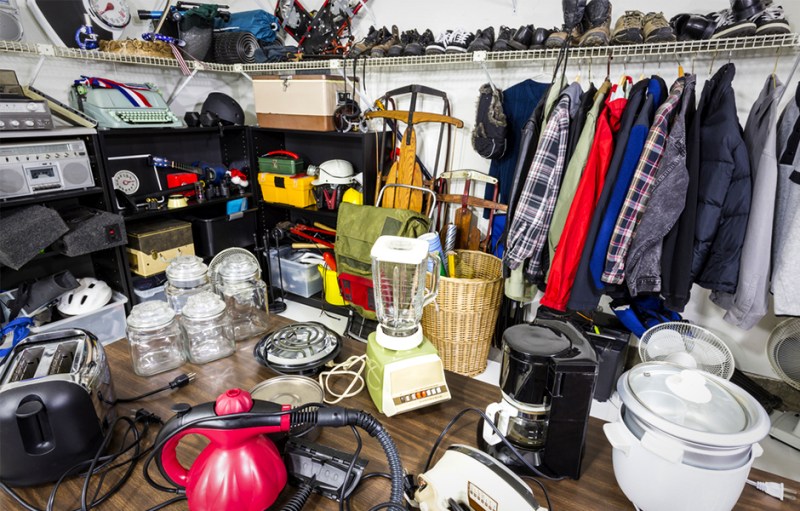
Everyone has clutter—that doesn’t mean everyone is a hoarder like those featured on some TV shows where they suffer the thought of discarding just about anything. If you’ve seen those episodes, you know some can have severe difficulty letting go of old tires, mildew-filled books, even empty soda cans. Those are extreme cases linked to mental disorders. But normal clutter shows up in just about everyone’s home as a result of day-to-day living and if you’re aware enough you can stop it in its tracks before it threatens to take over your life.
Lauren Rosenfeld, author of the newly published Breathing Room, offers strategies for decluttering even if you think you don’t have a problem. “Many men have an ‘out of sight, out of mind’ mindset about clutter,” says Rosenfeld.
Here are five tips to push into practice:
1 – Listen to your significant other. If you are living with someone and your clutter bothers them, find out why and be willing to negotiate. “Don’t value stuff over your relationship,” says Rosenfeld. “A lot of men can’t understand why it’s a problem for someone else, but if it’s making the other person uncomfortable then it is a problem.”
2 – Don’t be defensive. “Most everyone has a “don’t touch my stuff,” kind of mindset,” says Rosenfeld. Instead of letting clutter be the trigger for an argument, really communicate and find a strategy that will make both of you comfortable in your shared living space.
3 – Start small. There are some clutter warriors out there who decide they’ll “attack” the garage on a weekend. “Clutter isn’t the enemy,” says Rosenfeld. “People make the mistake of thinking they’ll clean out the garage in a short period of time. Then they get tired, barely see results and decide there’s no point in proceeding.” It’s better to designate a small area to clear first. Then when you successfully clear it, you can celebrate the progress and move to other areas.
4 – Take inventory of what you have. A lot of people build up clutter because they can’t find that roll of packing tape or hammer and go out to buy new ones; then they wind up with more than they need. Create a space for items that you find yourself searching for.
5 – Be aware of clutter before it snowballs. If you can’t even find the top of your desk then clutter has stacked up to a point that may be overwhelming to deal with. Work on strategies to clear the surface on a more frequent basis. Same goes for electronic clutter. It’s easier to delete unneeded emails when they come in instead of facing tens of thousands to clear through after a certain period of time.
[Photo credit: trekandshoot, Shutterstock]


